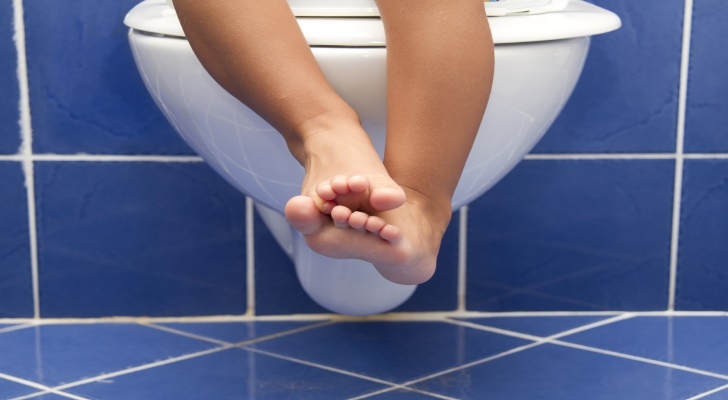Bladder Infection Symptoms and Signs

Exhaustion. A feeling of extreme tiredness may be one of the less obvious symptoms of an infection of the bladder. This is important to know because, while some of the more known symptoms are pain while urinating and discolored urine, these symptoms may not always be present. It has been observed that sometimes when an older woman suffers a bladder infection, the only symptom she experiences is exhaustion. As exhaustion is a symptom of a large number of ailments, this can make diagnosing a bladder infection quite difficult in some cases.

A recurrent urge to urinate. An aberration in the pattern of passing urine is usually the first sign of a bladder infection. If one finds that one feels the urge to urinate far more often than one is used to, this could certainly indicate a bladder infection. Also, someone suffering from a bladder infection will feel a sort of burning discomfort in the process of passing urine.

Running a temperature. When you suffer from a bladder infection, your body’s immune system will begin to respond. As the infection progresses, this response will become more intense, sending your entire physiology into a heightened state of function. This will cause you to run a fever. It goes without saying that if you find yourself running a slight temperature, seemingly without reason, you should suspect that you are suffering from an infection. If the other symptoms that you observe correlate with a bladder infection, the diagnosis then becomes certain.

An uncontrollable desire to urinate. In a bladder infection, the bladder becomes extremely constricted and can hold only a minimal amount of urine. This puts pressure on the bladder, making the urge to urinate uncontrollably. While a healthy person may be able to resist this urge for a small period (not that this is a good thing to do), a person suffering from an infection of the bladder finds that they must go at once. Another indicator of a bladder infection is passing only minute quantities of urine and feeling the urge again almost immediately.

A feeling of discomfort around the pelvic region. Your hips form a bowl-shaped bone called the pelvis. This bowl of bone contains tissues and organs that are part of, or at least in contact with, your body’s urinary system. If the urinary tract (and this includes the bladder, connecting tubes, and the kidneys themselves) is inflamed, the pelvic bone itself and the connecting muscles will experience considerable distress. As the infection advances, tissues will become inflamed, and the swelling will put pressure on the pelvic bone itself. While this distress and discomfort are mild, it is still extremely noticeable whether you are sitting or standing upright.

Discolored urine. If the urine passed is discolored to a considerable extent, or if it has a strange smell, these are clear indications of an infection of the bladder. The urine may be very dark, or it may look clouded. It can also have a bloody tinge to it, which can be quite disturbing to a patient. Generally speaking, this will also be accompanied by a bad smell. If one is experiencing any of the other symptoms of a bladder infection, it is good to check on the color of the urine, as this is one of the clearest indications of a bladder infection.

Extreme pain. An expected part of a bladder infection is a pain in the process of urination, but not many people know that pains can also be experienced in other areas of a person’s body. Sometimes, a person suffering from a bladder infection will experience intense pains in the lower areas of the torso, both in the front and in the back of the body. Spreading pain might indicate complications. If the side begins to ache underneath the ribs, it might mean that the infection has spread to the kidneys.

The quantity of urine passed becomes extremely small. An inflamed bladder can become extremely constricted and can contain only a very low volume of urine. As you try to pass urine, the pressure forces you to void it far more regularly than is your norm. However, you will pass only very small quantities on each visit to the bathroom. You will also experience considerable distress and discomfort while urinating, and this, combined with how regularly you have to go, will make this a rather distressing task.

Abdominal pressure. As the infection of the bladder increases in severity and the tissues become inflamed and swollen, these tissues then begin to put pressure upon the surrounding tissue as well. You will begin to feel a bloated sensation or pressure on the lower part of your torso, especially around the abdomen. With the tissues around the bladder and kidney being inflamed, anti-inflammatory drugs will have to be administered to ease this condition.

Urine with an extremely bad odor. If you observe that you are passing clouded or discolored urine, you should also check whether it has a bad odor. Urine with a very bad odor is a clear indicator of a bladder infection, as it contains dead cells or pus cells that are a result of the infection. These cells might either be your body’s own immune cells or else bacteria from the infection. In any case, it is these dead cells that cause the discoloration or cloudiness in the urine, and which is the source of the foul odor. The intensity of the discoloration and the smell is affected by the amount of water you drink, and you will find that it is far stronger when you have not passed urine for some time.
